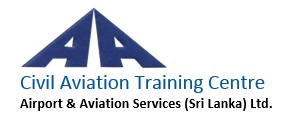

 |
 |
|
Lesson 2: Functions of our company (ctd.)
|
[Page 2.8] |
|
Air Navigation Service Function (ctd.) |
|
|
Navigational Aids |
|
|
|
|
|
|
|
As mentioned earlier there are several types of equipment that are located on ground that radiate radio signals that help the planes to navigate safely. |
|
|
|
|
|
|
|
To navigate, the pilot requires two important pieces of information. They are the position and the velocity (speed along a particular direction) of the plane. A Navigational Aid provides a part of one or both of these information. When the information provided by all Nav Aids are taken together the pilot can determine both the position and velocity of the plane and thereby with the directions given from ground by the Air Traffic Controller, he can navigate the plane safely along the intended route towards the required destination. |
|
|
|
|
|
|
|
We will not go into the detailed operation of Nav Aids because it is beyond the scope of this course. However we would identify the different Nav Aids by name. |
|
|
|
|
|
|
|
|
|
|
|
The above listed Nav Aids ( see pictures) are the most common ones used across many parts of the world. It is the responsibility of the ANSP to install Nav Aids at appropriate locations to cover the entire FIR, to calibrate them (learn more) and to maintain them in serviceable condition at all times. As pilots depend on them for navigation, it is very important to ensure that the Nav Aids are radiating accurate radio signals at all times. Special monitoring systems are available on ground to verify whether the signal that is being received by the planes is correct. |
|
|
|
|
|
|
|
A type of navigational aid that has become very popular and found wide spread use nowadays are the Satellite Based Positioning Systems. Using these, anyone equipped with an appropriate receiver can determine his position on earth using signals received from satellites (learn more). The advantages of satellite based positioning systems are that they can be used anywhere in the world and that they do not require any ground based equipment unlike conventional Nav Aids. The two most popular Satellite based positioning systems that are in use today are the Global Positioning System (GPS) deployed by the United States and the Global Navigational Satellite System (GLONASS) deployed by the Soviet Union. |
|
|
|
|
|
|
|
Nowadays there are positioning equipment that can receive signals from the satellites of both these systems and determine its position without any aid from ground. Even smart phones have such receivers and applications like Google maps use them. All planes now have such equipment on board and theoretically, are in a position to determine its position using the satellite based systems and without any help from the ground based Nav Aids. But ground based Nav Aids are still in use and will be in use for a long time to come because it is still not possible to navigate accurately based on satellite based systems alone. This is particularly true during the take-off and landing phases of a flight where satellite based positioning is still not considered accurate enough to totally rely on. Some future day when pilots are truly able to navigate using satellite based systems alone, ANSPs would be greatly relieved. |
|
|
|
|
|
|
Powered by IT Division for delivery by the VTW CATC © AASL All Rights Reserved